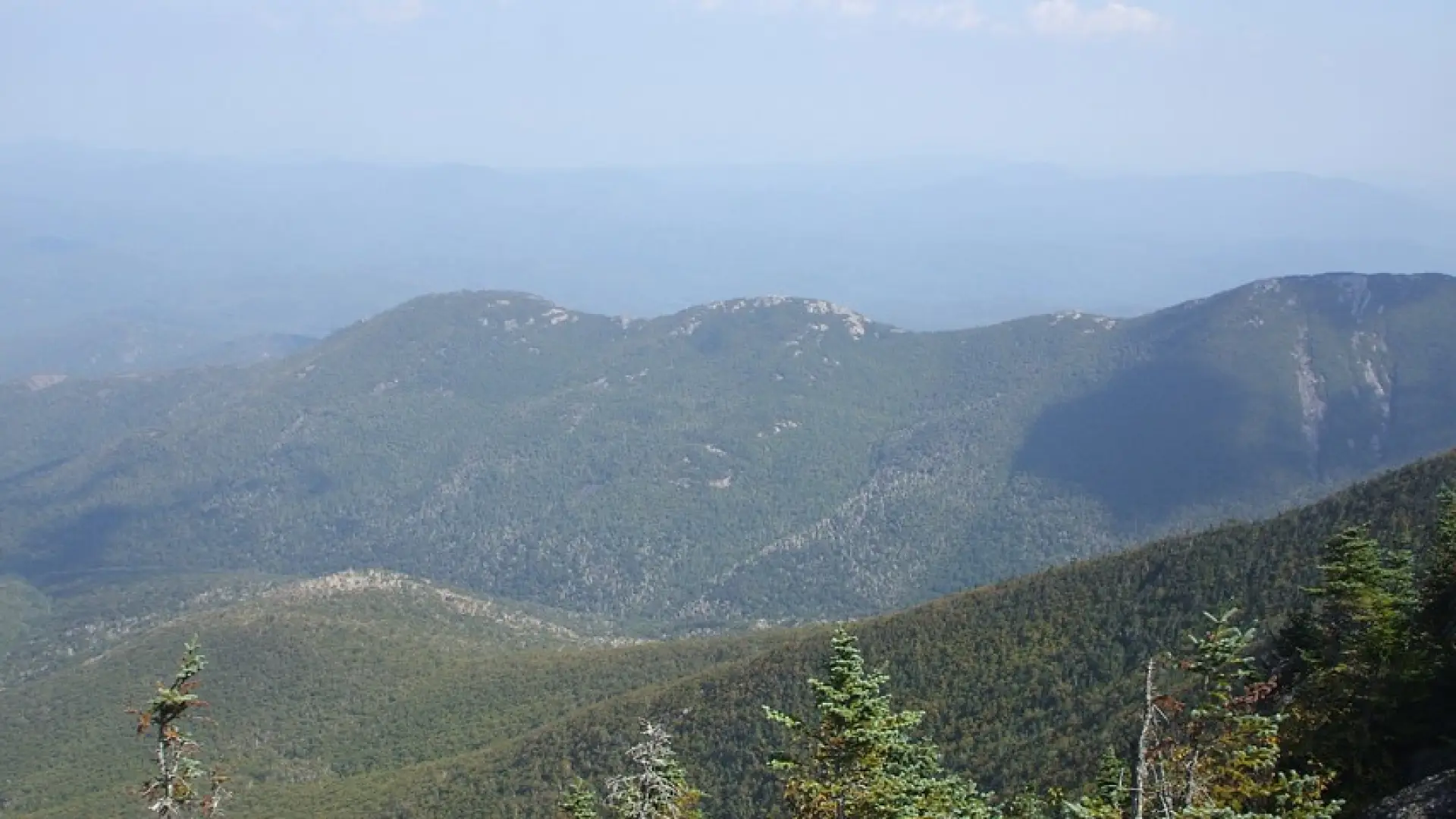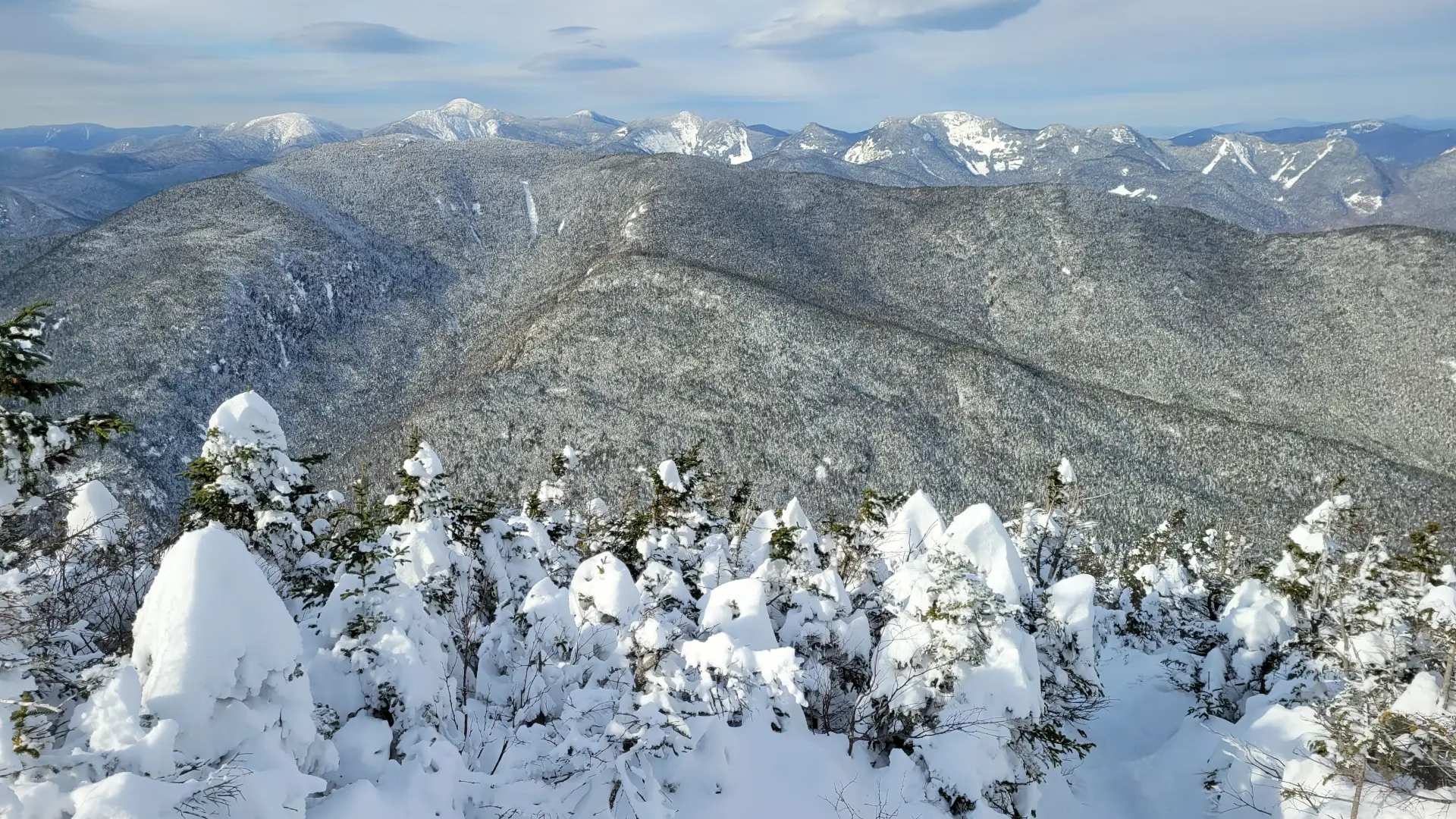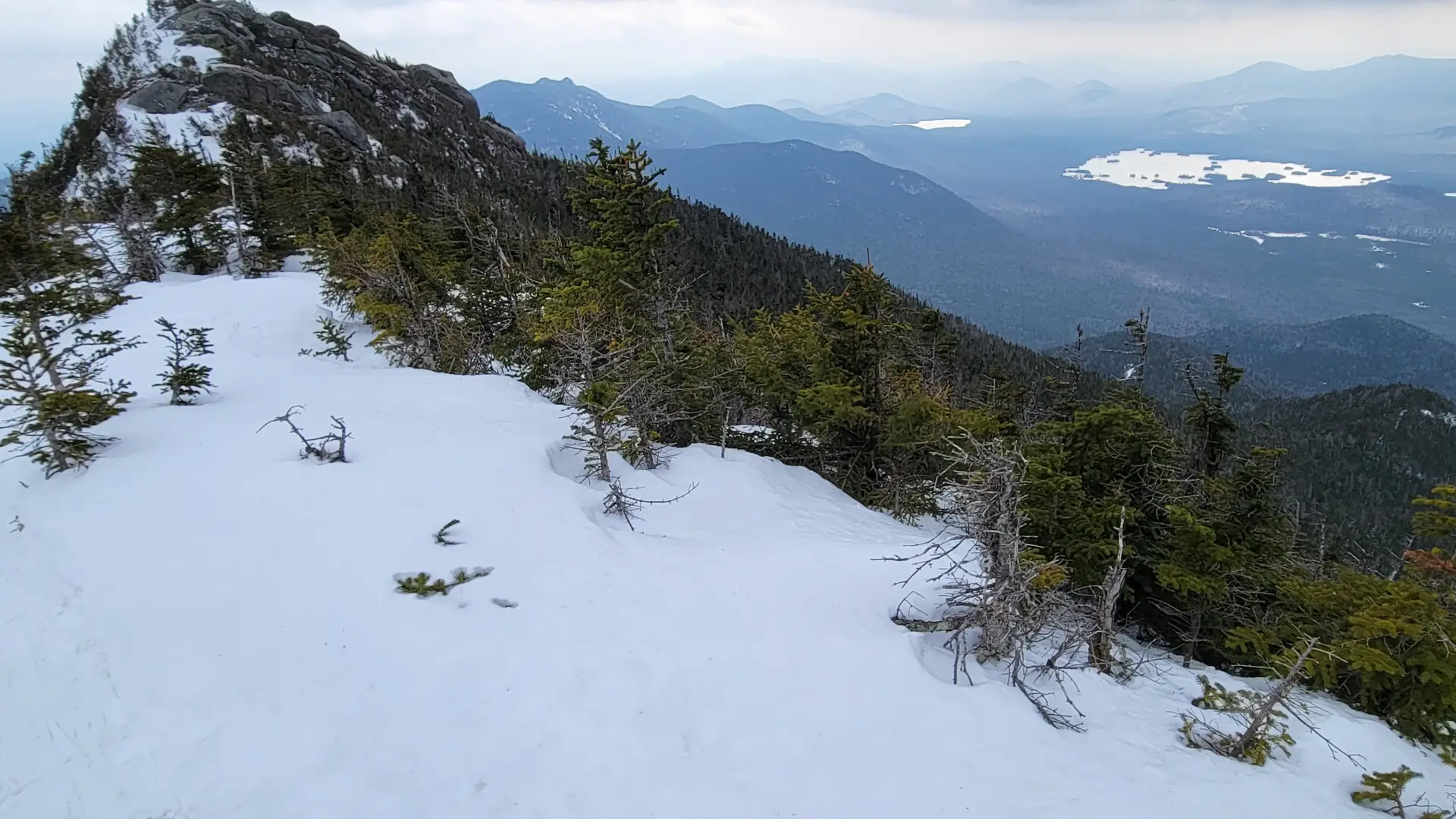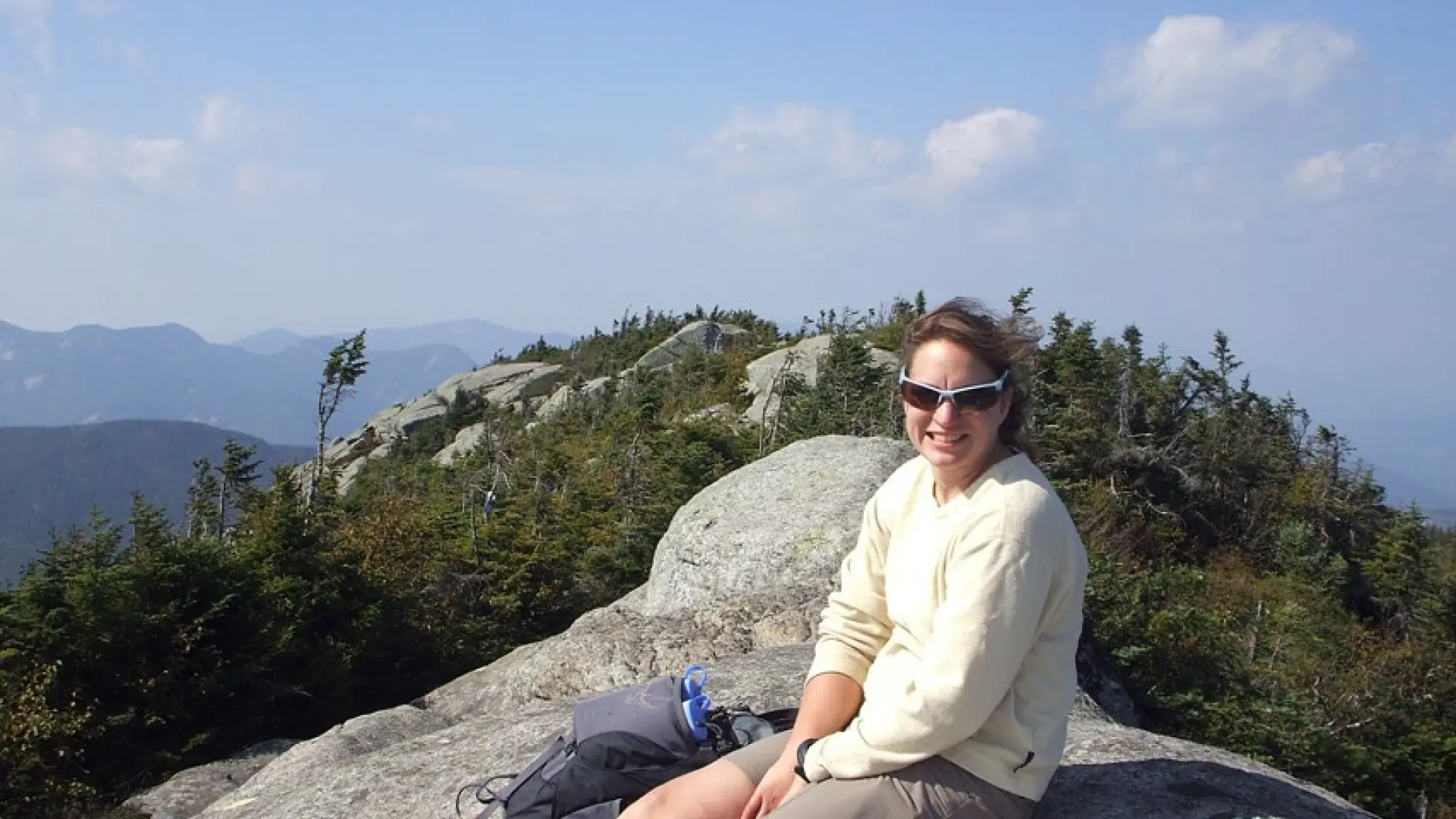- Out and Back
- Out and Back
- Out and Back

Hiking New York's 6th highest peak
Dix Mountain is the 6th tallest Adirondack High Peak. It is a steep, exposed, and serious hike that requires significant preparation. A successful hike of Dix Mountain involves research, physical fitness, the right gear, and knowledge of Leave No Trace principles. Dix can be climbed by itself, but in many cases is combined with the rest or parts of the range. The Dix Range also includes Carson Peak (South Dix), Grace Peak (formally East Dix), Hough Peak, and Macomb Mountain.
Key takeaways
- Elevation: 4,857 feet
- Distance: 13.2 miles round trip
- Elevation gain: 3.740 feet
- Based on an ascent from Elk Lake via the Beckhorn Trail
Hiking Dix Mountain
There are multiple approaches to this mountain. These are the most popular when climbing Dix by itself, with the trailhead at Elk Lake being the main way people hike this peak in the summer months. The views from Dix are some of the best in Northeast including views of the Green Mountains in Vermont. Below are brief descriptions of the two main marked trails to Dix Mountain. To visit the other peaks in the range, we highly recommend you pick up a guide book for more in depth detail or hire a local guide to assist you in your visit to the Dix Range.
Elk Lake: Please note, this route is closed during big game season. Hikers commonly choose to climb Dix from the south by taking the Hunter Pass Trail from Elk Lake toward Hunters Pass, then to the Beckhorn Trail and up for a 6.6 mile one way hike. Hunter's Pass is a longer trail but slightly less steep than the Beckhorn, and can be an alternative if you don't do well with exposure.
Round Pond: This is 13.2 miles round trip when doing Dix Mountain alone, with 3,725 feet of elevation gain. From Route 73, you will climb steeply above the road and follow a moderate course to the shore of Round Pond. After a hike around Round Pond, you will start a modest ascent to a four-way intersection. From here it's mostly flat to the Bouquet River Lean-to at 4.2 miles. From this point the climb starts to get a bit steeper to the base of the slides on the face of Dix. The slides do not access the summit. After passing along the base of the slides you will duck back into the woods and start a very steep and demanding hike along an eroded path. The steep terrain does not end until the summit is practically reached. This makes for a challenging, but rewarding, climb.
Dix Mountain in the winter
Dix Mountain is a challenging peak that should only be attempted by experienced hikers, especially in winter, so make sure you are prepared. Snowshoes are necessary, and snow spikes and crampons are needed to climb the exposed upper reaches of the peak, especially if ascending the Beckhorn Trail from Elk Lake. Most people, if tackling Dix Mountain only in the winter, choose to go from the Round Pond trailhead. Plan on temperatures in the higher elevations being at least 20 degrees colder than at the trailhead, not including the windchill. Bring several extra non-cotton layers, a headlamp with spare batteries, extra food, a windbreaker, goggles, a face mask, and supplies for spending the night in case of an emergency.
Find your perfect trail
Does Dix Mountain sound amazing, but a little more than you want to tackle right now? No need to stress, with over 2000 miles of hiking trails in the Adirondacks we are sure we can find the perfect hike for you.
How to get there
Round Pond: To reach this trailhead, head south on NY 73 from Lake Placid and Keene about 1 miles past the parking area at Chapel Pond. The start is marked with a small DEC sign and there is a small parking area just north of the trailhead. Do not park on the shoulder of the road.
Elk Lake: To get there from the intersection of Route 86 and Route 73 in Lake Placid, follow Route 73 through Keene and Keene Valley. Continue on Route 73 to I-87. Merge onto the highway and continue until Exit 29 (North Hudson). Turn left on Blue Ridge Road and continue about 4 miles toward Newcomb, where you'll see a sign for the Elk Lake Lodge. Turn right here and follow this to the end of the road. Keep in mind, in winter, the lot at Elk Lake is closed and hikers will need to start at Clear Pond, 2 miles down the road, adding 4 miles round trip to a hike.










